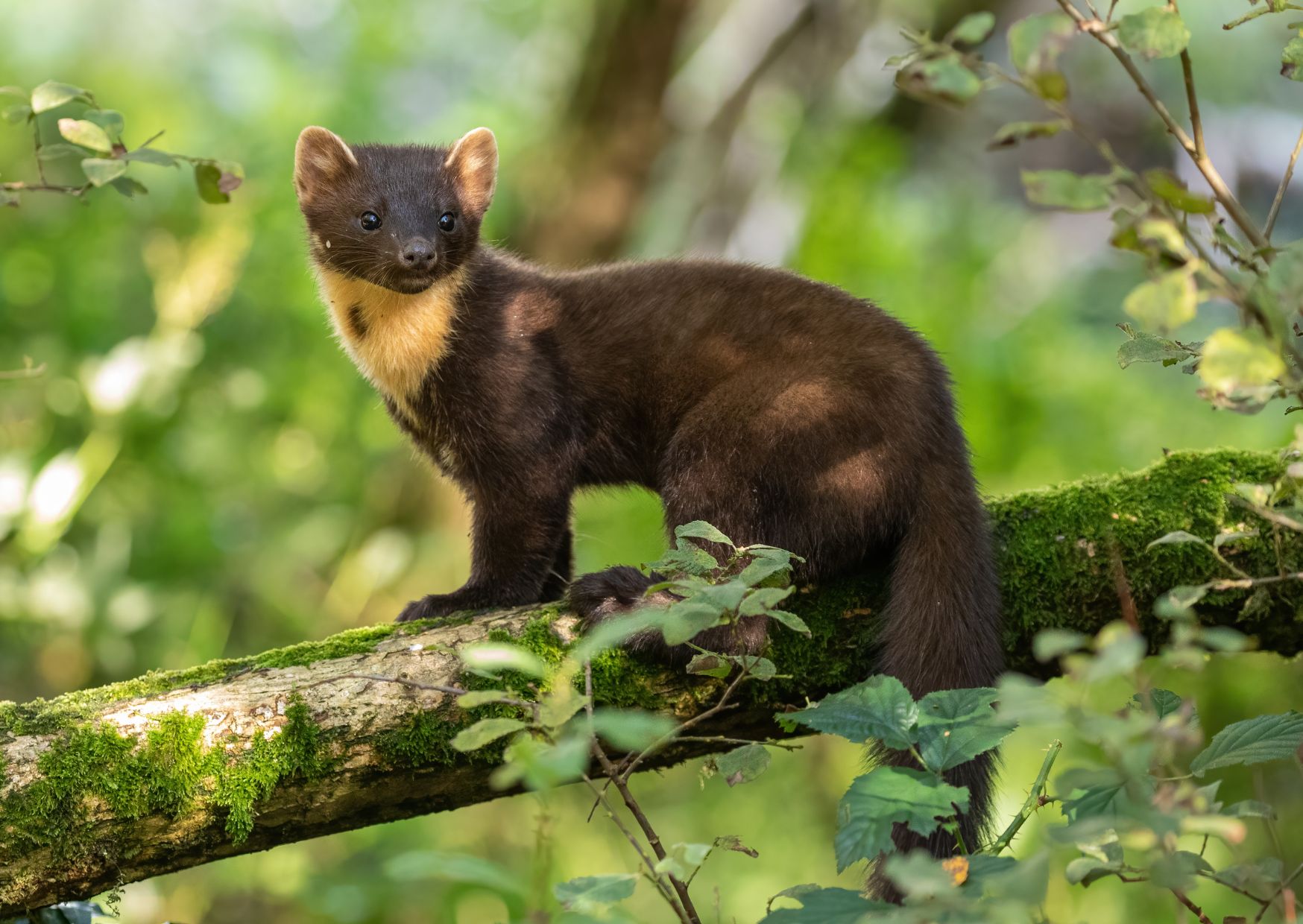
Devon Wildlife Trust confirmed that a group of 15 pine martens was reintroduced to Dartmoor in 2024 after more than a century of absence. These elusive, tree-dwelling mammals were once common across the region but vanished due to a combination of deforestation and hunting. Now, thanks to careful planning and dedicated conservation efforts, they are back — and breeding.
Hidden cameras at a protected site recently captured the first images of newborn pine martens, known as kits. In one heartwarming clip, three young martens can be seen tumbling through fallen leaves and racing up a wooded bank. These rare sightings sparked joy among the conservation team.
Tracey Hamston, who leads the Two Moors Pine Marten Project, called it a historic moment. She said the return of a breeding population was a powerful signal that nature is beginning to heal. According to her, bringing back pine martens is not just about one species, it is about restoring balance and vitality to woodland ecosystems.
Pine martens are small, agile predators that play an important role in forest environments. Native to the UK, they belong to the weasel family and are easily recognized by their sleek brown fur, bushy tails and creamy-yellow throat patches. Adults are about the size of a domestic cat and are most active at dusk and during the night.
These animals are expert climbers and spend much of their time in trees where they hunt small mammals, birds and insects. They also feed on fruit and berries, helping to spread seeds and support woodland growth. Their presence in an ecosystem helps control rodent populations and can even benefit other species. In parts of the UK, where pine martens have returned, researchers have observed a decline in invasive grey squirrels and a recovery in native red squirrel numbers.
In the spring, female pine martens usually give birth to two or three kits, which remain hidden in dens for the first several weeks of life. By early summer, the young begin exploring their surroundings and learning the skills they need to survive in the wild.
The reintroduction on Dartmoor is just the beginning. The team behind the project is already preparing for the next phase, which will see more pine martens released in Exmoor later this year. The hope is to build a healthy, self-sustaining population that will eventually spread across the wider landscape.
The rewilding of pine martens is a long-term commitment, but the early signs are incredibly promising. Devon’s forests are once again alive with the rustle and dash of one of Britain’s most charming and vital woodland mammals. The return of these creatures is a reminder of what is possible when people come together to protect and rebuild nature.
Photo by David O’Brien from Getty Images
